|
In this Issue...
- Bringing Social Choice into Addiction Research: an interview with Marco Venniro and Daniele Caprioli
- Career Feature: Career success beyond academia
- Trending Science
- Interview with Keynote Speaker: Professor Gavin McNally
- Member News
- Member Publications
- 2019 Early Career Achievement Award: Zackary Cope, PhD
- 28th Annual IBNS Conference info and details
- Discount offered for IBNS members at the official IBNS Satellite AS4SAN Conference
- Pre- and Post-IBNS Conference Tours
Bringing Social Choice into Addiction Research
An interview with Marco Venniro and Daniele Caprioli
Dr. Daniela Neuhofer, PhD, Guest Editor
Medical University of South Carolina
Charleston, SC, USA
Featuring: Marco Venniro, PhD
Postdoctoral Fellow, Dr. Yavin Shaham Laboratory
National Institute on Drug Abuse (NIDA)
and
Daniele Caprioli, PhD
Assistant Professor, Neuropsychopharmacology Laboratory
Physiology and Pharmacology Department
Sapienza University of Rome
The last two decades have led to incredible technological advances in neuroscience. Tools like Optogenetics and Chemogenetics allow the modulation of distinct cell populations to dissect neuronal circuitries involved in distinct animal behaviors. New imaging tools are pushing the boundaries of light microscopy and allow the visualization of nanoscale components of synapses. However, paralleling the euphoria about these technological advancements, there is also disenchantment, as a huge knowledge leap in basic neuroscience did not translate into major clinical advancements for patients suffering from mental disorders. Consequently, neuroscientists have to confront the replication crisis, but also reevaluate the animal models used to study the neurobiological underpinnings of psychiatric diseases like depression, schizophrenia and addiction. Along these lines, many scientists try to evolve traditional behavioral models by taking a closer look at the ecology of model animals as well as by trying to bring animal models closer to the human condition.
I spoke with two of these scientists, Marco Venniro, PhD – Postdoctoral Fellow in the lab of Yavin Shaham, PhD at NIDA and Daniele Caprioli, PhD – Assistant Professor at the Department of Physiology and Pharmacology in Rome, Italy about their recent work, the importance of social choices in addiction, and breaking dogmas in the behavioral Neurosciences.
Marco, you are the first author of really beautiful work published recently in Nature Neuroscience investigating how volitional social interaction in rats affects drug seeking. Could you give us a short summary of this study?
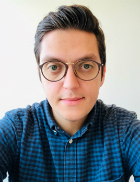 Marco Venniro: Our lab has been using the choice between a drug and food to achieve voluntary abstinence in rats. In the Nature Neuroscience article, we instead wanted to generalize this phenomenon by using different nondrug rewards. To better model the social nature of human abstinence (e.g. people with substance use disorders risk to lose their kids, partners, jobs, etc.), we introduced a social component into our choice procedure and investigated its effect on drug addiction. Marco Venniro: Our lab has been using the choice between a drug and food to achieve voluntary abstinence in rats. In the Nature Neuroscience article, we instead wanted to generalize this phenomenon by using different nondrug rewards. To better model the social nature of human abstinence (e.g. people with substance use disorders risk to lose their kids, partners, jobs, etc.), we introduced a social component into our choice procedure and investigated its effect on drug addiction.
The first problem was to create an apparatus to make this choice work. So, we built a new operant chamber to allow the rats to freely choose between drugs and social interaction. We showed that rats invariably preferred the social reward over the drug, independent of the dose and interestingly also independent of the class of the drug (we use both methamphetamine and heroin). The only way to decrease the rats’ social preference was to introduce a long delay or punishment of the social reward.
Daniele, this recent work is based on the concept of voluntary abstinence, an animal model that you have introduced a few years ago. Could you give us a short explanation of this model and the idea behind it?
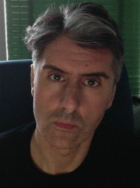 Daniele Caprioli: The idea behind the voluntary abstinence stems, on the one hand, from inspiring scientists in the addiction field (among others Ahmed SH, Badiani A, Shaham Y, Redish AD) and on the other from my interest in microeconomics. Overall, it is all about the context and how individual actors make decisions! Daniele Caprioli: The idea behind the voluntary abstinence stems, on the one hand, from inspiring scientists in the addiction field (among others Ahmed SH, Badiani A, Shaham Y, Redish AD) and on the other from my interest in microeconomics. Overall, it is all about the context and how individual actors make decisions!
We knew that Contingency Management (among the most successful behavioral therapies for drug dependence) leverage on the reinforcing properties of an alternative reward to promote abstinence. However, surprisingly enough, no attempt was made to study the neuropsychological underpinnings of this phenomenon in a controlled fashion.
Based on these considerations, we introduced a contingency management-based relapse model, where we achieve long-lasting voluntary abstinence, prior to the relapse tests, by giving rats mutually exclusive choices between a drug and palatable food.
In your Nature Neuroscience paper you found that even a subpopulation of rats that were identified as addicted via a DMS IV-based model chose social reward over drug reward. Did you expect that?
MV: No, we were not expecting that. We had rats in a progressive ratio test that were pressing hundreds of times to receive a single injection of methamphetamine, but when we gave the choice between drug and social interaction they were still choosing the social reward. That was very surprising to us: that rats, independent of their addiction score, preferred social reward over drug reward.
Very surprisingly, we also observed that a period of social choice-induced voluntary abstinence also prevented incubation of drug craving– incubation refers to the intensification of drug seeking during abstinence- this was unexpected!
DC: I agree, that was unexpected. On the other hand though, we acknowledged the robustness and reproducibility of the data. I want to stress here that given the human evidence of the impact of social reintegration in promoting abstinence, our rodent model provides support for the translational potential towards the development of new therapeutic targets.
So is it 1) the social enrichment caused by the exposure to a social reward or 2) the active choice that the animal makes for the social reward and against the drug that prevents the incubation of drug craving?
MV: That is a great question. We think that this is a direct cause of the social choice. Previous literature has shown that social enrichment (experimentally combine rats and let them live together) decreases incubation of drug craving. However, as soon as the rats are single housed again, incubation comes back. In our study instead, the lack of incubation persisted even 15 or 30 days after the last social choice exposure.
We were incredibly surprised by this set of results, so we started to investigate the neurobiological basis of this phenomenon. So we decided to take a closer look at the central amygdala because this brain structure is critical for the incubation of drug craving after forced and food choice-induced voluntary abstinence. We observed that there was a selective recruitment of PKCdelta neurons in the lateral part of the central amygdala after social choice-induced voluntary abstinence. We believe that these neurons are preventing incubation because they are inhibiting the output neurons in the medial part of the central amygdala. So right now, we are trying to manipulate those neurons to reverse the lack of incubation of drug craving in our rats.
It has been shown that animals prefer sucrose over drug reward, do you think you would find similar results if you would present sucrose as an alternative reward?
MV: We did something similar investigating the effect of food choice-induced voluntary abstinence on incubation of drug craving. In a previous publication with Daniele, we showed reliable incubation of methamphetamine, but surprisingly not heroin craving after food choice-induce voluntary abstinence. In other words, with food as an alternative non-drug reward, we can only prevent the heroin craving but not the methamphetamine craving.
Do you think that these results that are highlighting the importance of social reward for drug abstinence also have social implications?
MV: Yes, I think that our findings can have really strong implications for the human problem because what we are suggesting is that we need to implement these social components in the support of people with substance use disorders. However, it is important to say that this is already something we know is working for the contingency management treatment and community reinforcement approach. Obviously, we cannot directly compare the social component of a rat with the social component of a human because there is a time frame that is slightly different. In our experiments, if the rat presses the lever it does immediately get a social reward. Instead in humans social reward is certainly more complicated concept; for example, if I don’t take drugs today, my wife might not come back immediately… so it is a different concept but I think it is important for us to add this component into animal models because we need to model closer and closer to the human situation.
DC: To be able to understand and treat drug addiction requires a concerted effort to study the various causes and roots at the core of the pathology. Bringing social context into preclinical addiction is therefore pivotal. Animal research on addiction is stymied by a translational problem and this is because for too long it has been “socially isolated”.
Your study really hits a nerve right now as the neuroscience community is discussing the validity of different animal models. One school of thought argues that as long as models have predictive validity (i.e. allows us to test the efficacy of drugs and treatments) these models are sufficient. But there is also more and more dissent against this reductionist view and a growing group of scientists believes that the lack of translatability of basic research is also caused by a marginalization of the ethology of our model animals which prevents us from getting an in depth understanding of the neurobiology underlying distinct behaviors. And on the other extreme, we have skeptics who say that animal models will never be able to fully model addiction because animals cannot speak, lack language and the human cognitive complexity in general. Where do you position yourself within this discussion?
MV: I will argue with the first position because I think that animal models are critical for understanding the neurobiology underlying different diseases in general; and this is also true for drug addiction. And we need to do something towards this. Obviously, I can see that people are not so happy with what has been done so far, because for over 30 years preclinical research continue to have a huge gap with the clinical side. However, in my opinion we need to keep trying and fail faster. We need to improve our animal models to get closer and closer with the human subjects. Instead, if we just continue to “protect” the dogmas: “this is the model has been used for the last 30 years, that’s it”, we will never be able to improve our knowledge on the topic. This is when I can see people losing their interest in animal models in particular. So I think it is our duty to try to implement… obviously also our new social model can fail, I don’t want to say that this model is THE model. Whether or not this model will fail, only time will tell. But if it fails, we will have to find another way and at least we have tried to incorporate something that is closer to the human condition.
Very interestingly, although we had 100% rats that preferred the social reward over drug, we were able to obtain a subpopulation of rats switching their preference when we introduced a long delay for the social reward. This situation mimics more closely the human situation, not all people will abstain just because of the presence of strong social support (e.g. family, job, etc.). So, starting from this our model can be an ideal testing ground for pharmacological or other biologically based interventions. Thus, while demonstrating that social reward has remarkable protective and restorative effects, our model also clears a much-needed path toward understanding and treating addiction in people who appear to benefit less from those protective effects.
DC: I fully agree with Marco.
The use of animals for scientific purposes is both a longstanding practice in biological research and medicine and a frequent matter of debate in our societies. Personally, I take the side of Jorge Box (1919-2013) who claimed that: "All models are wrong, but some are useful". Unfortunately, I cannot see suitable alternatives for our studies.
Is this your plan to follow up on that, to look at specific adaptations in these subpopulations or to do drug screening in these specific subpopulations?
MV: Right now, I am interested in the neurobiology of this social choice and so I want to first manipulate selective subpopulations of amygdala neurons and understand the protective effect of social reward on incubation of drug craving. Moreover, I want to do some in vivo recordings because I want to see during the decision-making moment why a rat that has been exposed for weeks to a drug, that has been taking drug, would prefer a social reward in a choice setting.
Obviously, this new model opens the avenue for a lot of things to study. For sure, investigating these different subpopulations of rats is in my list. But there are also other questions. For example, we used naïve rats for social reward but how would it change the social preference if the social partners would be addicted or stressed? Would this increase the preference for the drug??
Hopefully, next time I see you I will be able to give you some answers for some of those questions!!
Back to Top
Career Feature
Career success beyond academia
Dr. Daniela Neuhofer, PhD, Guest Editor
Medical University of South Carolina
Charleston, SC, USA
Ever-increasing numbers of students are drawn to Neuroscience [1]. This is not a big surprise: the brain is one of the most fascinating and complex organs and the possible discoveries to be made seem boundless. Large scale scientific research projects, like the U.S. Brain Initiative or the European Human Brain Project promise to revolutionize our understanding of the human brain and advance knowledge in the fields of neuroscience, computing, and brain-related medicine.
Despite of these uplifting views, the number of permanent positions offered at academic institutions falls short to accommodate the doubling rate of Neuroscience graduates. This imbalance creates debilitating competition over grant money and publications, which in the long run may impact the quality of science and takes a toll on the mental health of PhD students, postdocs and early career scientists. Indeed, a recent study has shown that the rates of anxiety and depression among PhD students are six times higher than those of the general population [2].
While science policy makers argue for diversification of academic positions to prevent a brain drain in academia, we will also have to eject the toxic narrative that leaving academia equals career failure and betrayal of scientific principles. Because, if we take a closer look, scientists who took the big step of leaving academia for good, found meaningful careers in industry and beyond. Here, three of these scientists share their career stories with us.
- Out of the Laboratory and into the Federal Government
- Executive Manager Life Sciences and Healthcare
- Senior Clinical Scientist
Out of the Laboratory and into the Federal Government
Rachel Anderson, PhD
AAAS Fellow
Washington, DC, USA
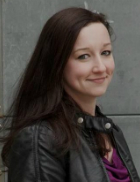 I became involved in behavioral neuroscience research as an undergraduate. My liberal arts college didn’t have a neuroscience program at the time, so as a psychology student seeking research experience, I looked for opportunities at a nearby medical university. This led to two very different research experiences. I earned research credits by working in a behavioral neuroscience laboratory where I conducted a study assessing effects of a dopamine antagonist on ethanol-induced conditioned place preference in mice. I also volunteered as a research assistant for a clinical assessment study evaluating a therapeutic approach in adolescents who reported alcohol and/or drug use. My role involved participating in home visits and administering surveys to track treatment outcomes. I became involved in behavioral neuroscience research as an undergraduate. My liberal arts college didn’t have a neuroscience program at the time, so as a psychology student seeking research experience, I looked for opportunities at a nearby medical university. This led to two very different research experiences. I earned research credits by working in a behavioral neuroscience laboratory where I conducted a study assessing effects of a dopamine antagonist on ethanol-induced conditioned place preference in mice. I also volunteered as a research assistant for a clinical assessment study evaluating a therapeutic approach in adolescents who reported alcohol and/or drug use. My role involved participating in home visits and administering surveys to track treatment outcomes.
I found that mice made much better research subjects than people, and I immediately loved working in a laboratory setting. After graduating, I worked for a year at the medical university as a lab technician to expand my research experience while applying to grad school.
I earned my PhD in Behavioral Neuroscience from the psychology department at Binghamton University. It was a wonderful training environment: I worked a lot, but I was surrounded by a number of supportive and inspiring peers who motivated me to keep pressing forward. I happily accepted a postdoctoral position at the Medical University of South Carolina as the next step in my pursuit to become an independent researcher.
The medical school environment was very different than the psychology department where I conducted my graduate research; I became acutely aware of the constant, ongoing efforts to secure funding to sustain a lab. I also found being a postdoc somewhat isolating compared to being part of a cohort of graduate students. I loved writing grants and planning and conducting research, but I was having a hard time imagining myself as a PI. The constant, escalating pressure of the requirements for landing and maintaining a PI position gradually undermined my confidence and dampened my enthusiasm for pursuing this career.
About three years into my postdoc, I was feeling stuck. I realized that “liking research” wasn’t reason enough to continue down such a grueling path, but I had no idea what other careers to pursue outside of academia.
When I first heard about the AAAS Science and Technology Policy Fellowship, I was intrigued and decided to apply on a whim. The fellowship places PhD scientists in all branches of the federal government, providing the perfect opportunity for a career transition. It was through this fellowship program that I landed my current position in a science policy office within a federal government agency.
As an AAAS fellow, I focus on the big picture: my job requires me to maintain a general sense of progress and highlights of research funded by the agency. I use this information to prepare briefing materials, budget justifications, and end-of-year reports to Congress. I also conduct portfolio analyses of research and serve as an associate editor for the agency’s peer-reviewed journal. I enjoy the variety in my duties and getting to use my brain in different ways every day! Basically, I work behind the scenes for the agency that used to fund my research, and in this way I still feel very connected to my research background.
Even though I knew there would be more structure and rules involved in government employment, the contrast from the academic work environment was still surprising. As a researcher, you have a lot of freedom and flexibility to pursue ideas as they evolve. As a federal employee, most activities have a specific protocol and every deviation from prescribed work and set work hours must be authorized.
I miss the excitement of analyzing data at the end of a study. I also miss mentoring young scientists. At the end of the day, however, I know that I am on secure career path that allows me to enjoy life outside of work – and I’m very happy about that.
Advice for those thinking of leaving:
- Try to pinpoint your reasons for wanting to leave, so you can make an informed decision. It will be difficult to re-enter academia after leaving.
- Talk to people who transitioned to another career. You probably know someone who knows someone who left academia for another job. LinkedIn and Twitter are valuable resources.
- Consider a fellowship! There are a number of well-paid fellowships and programs designed to help trained scientists enter new fields – many are listed on this FASEB website. How often do you get to try out a new career before taking the plunge?
- When you start your job search, remember to reframe your narrative. Convert your CV into a resume: Your accomplishments as a researcher need to be translated in skills that can be applied to a variety of other jobs.
Back to Top
Back to Career Features
Executive Manager Life Sciences and Healthcare
Dr. Gunnar Grah, PhD
Executive Manager Life Sciences & Healthcare
Baden-Württemberg International GmbH
Stuttgart, Baden-Württemberg, Germany
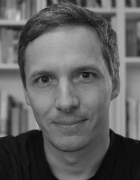 If I look at my career, or rather the assortment of professional activities that I have pursued so far, the best description might be that science has been the centre of gravity around which I have been orbiting, sometimes closer, sometimes at a greater distance. Becoming a biologist was my plan since I was young. It was such a pure (read: naïve) wish that I didn’t bother to take a closer look at specialisations and their respective attractiveness in the job market. So I studied biology, plain and simple, and earned my first degree in behavioural ecology. If I look at my career, or rather the assortment of professional activities that I have pursued so far, the best description might be that science has been the centre of gravity around which I have been orbiting, sometimes closer, sometimes at a greater distance. Becoming a biologist was my plan since I was young. It was such a pure (read: naïve) wish that I didn’t bother to take a closer look at specialisations and their respective attractiveness in the job market. So I studied biology, plain and simple, and earned my first degree in behavioural ecology.
My efforts to get a job in nature conservation were thwarted by lacking work experience. An internship in science programs for television and radio was great fun, but this didn’t lead to a financially viable employment, and I also missed the clarity and logic of science. So I started my doctoral studies in behavioural biology. I aimed to understand through a series of behavioural experiments how, in the absence of odour trails, desert ants use internal representations of routes to orientate in three-dimensional environments.
I enjoyed doing science, but being the only one in that lab who worked on this particular problem, I felt it to be a rather lonely business, and outside the annual field season I missed the fruitful exchange with people working on a similar set of problems. Once I held the degree in my hands, I had to assess my options. Pursuing a career in academic research was out of the question because I had been good at my work, but not that good. What was more, I was not willing to subordinate all my other interests and plans for my life to the singular goal of becoming a professor, the dim chances of actually getting there notwithstanding. What I liked as well, if not even more, about academia was teaching, but in the late 2000s these positions were likewise scarce at German universities.
So my engagement with science was destined to become a bit more meta. I gave scientific film-making a try, but while working in this field turned out to be no problem with my background, getting actually paid for it was a different question. At least this work embellished my CV enough to get offered a position as science communicator for a university research centre, a position that I loved and held for seven years. However, science communication in third-party funded projects meant that I was employed on a string of contracts without any guarantee for them to continue, and no permanent position in sight.
Given this precarious nature of my job and my wish to widen my horizons a bit more, I then became “Executive Manager Life Sciences and Healthcare” at a state-owned agency for the support of international cooperation in business, science and research. The agency carries out a number of different activities, ranging from joint pavilions at trade shows to organising delegation visits to countries around the globe. Whenever such activities touch upon life sciences or health, I join the team to do research, offer advice, establish necessary contacts, or come up with ideas how to achieve our goals best.
What I like about my job is its thematic breadth. It also allows me to work with and for scientists and to help them establish new contacts. My work allows people to get to know each other across borders and continents, who should know each other, but might not have the chance otherwise. Also, I love meeting people from different countries, as it widens my own horizon way beyond the topic at hand.
I miss academia occasionally, and usually most when my work takes me to a university. I miss it because I spent 15 years of my life at academic institutions, so they feel like home to me. What I enjoy there is to feel the dedication to knowledge and the celebration of curiosity. I find it relaxing that people can afford to pursue questions without immediately thinking about their marketability. And you can bet on meeting some very interesting people as well.
Still, I don’t regret my decision to leave (or go into a higher orbit, to use my initial metaphor), as it allows me now to lead the life I wished and hoped for. Looking back at stepping out of academia, I guess what helped me most was that I didn’t only had scholarly achievement on my résumé. If this had been all I had to offer, academia would have been the one and only place for me. But because I pursued other interests like film-making with passion as well, and rather embraced it when life made me drift sideways a little, I had mastered a number of skills that ultimately led to my getting the current position.
Back to Top
Back to Career Features
Senior Clinical Scientist
Jen Thompson, PhD
Senior Clinical Scientist
Cambridge, MA, USA
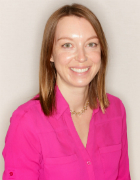 In the fall of 2015, during a poster session at the biggest neuroscience conference in the world, the PI of my lab told me to find another job. Less than a year into my postdoc, I was blindsided. Up until this point, I was working my way up the academic career ladder and tentatively planning for a faculty-level research position somewhere. Grant applications and manuscript writing were the only things on the horizon. However, looking back, this was one of the most thrilling and opportune times of my career. Because if it weren’t for this experience, I might not be kicking butt in the clinical development group of a mid-sized biotech company, basking in everything that an industry job has to offer. As it turns out, hindsight is pretty fantastic. In the fall of 2015, during a poster session at the biggest neuroscience conference in the world, the PI of my lab told me to find another job. Less than a year into my postdoc, I was blindsided. Up until this point, I was working my way up the academic career ladder and tentatively planning for a faculty-level research position somewhere. Grant applications and manuscript writing were the only things on the horizon. However, looking back, this was one of the most thrilling and opportune times of my career. Because if it weren’t for this experience, I might not be kicking butt in the clinical development group of a mid-sized biotech company, basking in everything that an industry job has to offer. As it turns out, hindsight is pretty fantastic.
My academic career began in a fairly standard way. A fantastic lab tech position eventually led to the completion of a PhD program. These were deeply fulfilling experiences that really whet my appetite for research; I continue to be extremely appreciative of the support and training I received during these early years and I credit these opportunities in large part for my ability to persevere, manage change, and for general career success. In contrast, the postdoc ended up being not so great, and I was unprepared for this (yet relieved when I realized it’s more common than I first thought).
While the mismatch in expectation vs reality was a complete surprise, it was the afternoon of that conference poster session where I really began to hone some key career skills: cultivating and leveraging my professional network. I decided that the rest of that meeting would be spent relationship building rather than learning about the latest cutting-edge techniques. Fast forward nearly three and a half years later, where I currently work on a clinical development team to research and strategize the best way to test whether our compounds are safe and effective in human participants. The current program I am working on is a non-opioid drug for pain management. It’s a very creative position, I’m constantly learning, and the program itself is something I feel very passionate about.
Both my current and prior industry jobs (bench research in Big Pharma) opened my eyes to things I did not expect when transitioning to industry. Almost all were very pleasant surprises, but my top three are below:
- It feels more impactful. With industry, the resources are typically in place—by design—to transform a brand-new chemical entity into a safe and efficacious drug that treats a disease, from start to finish. This is why the company exists in the first place. This is in contrast to my experience in academia, where the end goal is to add to the scientific literature, ideally in the form of a highly cited journal article. Exploratory academic research is by no means unimportant, but I realize that I much prefer working to help commercialize a new idea and fulfill an unmet patient need. Working for a biotech company means I have the opportunity to do meaningful, and potentially transformative work. While cliché, it really motivates me to get up each morning. I used to think that leaving the bench would be boring, because I wasn’t “getting my hands dirty”. But now that I realize how much strategy and creativity goes into clinical trials to obtain the highest quality data in the most efficient way possible, my only regret is not entering this area sooner.
- Soft skills are much more important for success. In academia, discovering a new brain region might be a golden ticket to a faculty position and your very own lab.. Not so in industry. It’s a proven track record of good people management and teamwork that opens the door to success. In industry, at the end of the day, people are not going to remember the impact factor of your publications, how many cells you could patch, or how much you knew about a single gene. They are going to remember how awesome (or how much of a jerk) you were to work with and the effectiveness by which you worked on a team. This will stay with you forever, and factor into promotions, salaries, and how easy (or hard) it is to get another position down the road (the rumor is true, layoffs happen). Good emotional intelligence, an upbeat positive attitude, and confidence that the people that work for you are capable, solid individuals are all invaluable for helping teams work effectively, grow in the long term, and for continued success in your position.
- The work/life balance it top-notch. It’s true, the salaries are higher. Much higher. And don’t forget bonuses and stock options. While this certainly makes things a bit sweeter (and increases the likelihood of a comfortable retirement), many other day-to-day aspects of the job make the work /life balance excellent. Yes, there are a lot of meetings. But that is the product of careful planning and being mutually respectful of others’ time. Work is efficient and punctual, and time is not wasted. I still put in a lot of hours, sometimes rushing to meet deadlines, but I am mostly able to leave work at work. When I do need to recharge, I can go on vacation with no expectation to be available. Finally—and perhaps the biggest contrast to academic life—I am not worried about how to obtain the resources (grants, unpaid volunteers, etc.) to do the actual work. It’s already built in; I wouldn’t have the job if it weren’t already written into the budget. The stress that this alleviates is huge, and a big reason why others are attracted to industry positions. I’m here to tell you, it feels amazing.
The most useful advice I would give to those wishing to make the jump are two-fold. The first is the old adage about networking. Do it, and get good at it. Don’t assume it always involves milling around in a massive room full of people, rubbing shoulders and handing out business cards. As an introvert, one-on-one coffee chats have become my go-to networking approach, and I always ask if that person is willing to connect me with anyone new. Building these relationships early will get you your next job later down the road; eventually, something will hit. Do not wait until you need a job. My other piece of advice is to maintain a positive attitude. This is often overlooked. The job search is arduous and draining, but attitude is everything here. While it’s unrealistic to be 100% positive throughout the entire process, keep the complaining and negativity private (i.e. with your partner or very close friends). An outward display of optimism and enthusiasm will get you noticed and take you far.
To those who are on the fence about “going to the dark side”, I suggest you give it a try (even if you want to remain in basic science). There will still be room for creativity, collaboration, and ownership of your own projects. I would challenge you to try and leave the bench, however; there are just so many opportunities available in areas I myself am still learning about. And don’t worry—“there’s no going back” is just a myth. While a return to academia is possible, but most people don’t bother. Almost everyone, including myself, is happier in the end.
February Newsletter vol 23-3 Guest Editor:
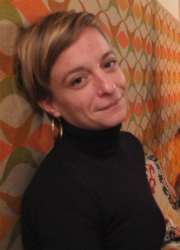
Dr. Daniela Neuhofer, PhD
Medical University of South Carolina
Charleston, SC, USA
Thank you, Daniela!
Interested in serving as a Guest Editor for the IBNS News?
Email: [email protected]
Looking for a New Employment Opportunity or Struggling to Find the Right Candidate? Meet the IBNS Career Center!
One of the biggest challenges for any international scientific society is to provide quality and informative support to its members, whether it's for a new employment opportunity or finding the right candidate for a newly opened position. The IBNS online Career Center portal (http://jobs.ibnsconnect.org) provides the right tools for both job seekers and employers.

The IBNS Career Center portal offers all the standard operational features; such as a thorough search engine by keyword and location, as well as a free review of your resume for feedback, and a job-posting service for employers. However, what makes the IBNS Career Center stand out in terms of support is two additional quality features: resources for job seekers & access to a resume bank for employers.

In the Resources section, you have access to a number of articles with valuable tips in building a resume, job seeking, and communication. These tips come from experienced scientists in the field -- not only for searching or applying for a position, but also for the interview process. Interested in 'building your brand’ or strengthening your social media presence? You will find plenty of advice and tips to do so, which will help strengthen your image and move your career to the direction you want!
In the Resume Bank, potential employers have free access to a large bank of resumes and profiles. You can customize the filters that apply to your search and create lists of candidates that fulfill your own criteria.
Back to Top
Trending Science
In this column, we share the latest research, interesting scientific articles and news.
Dr. Daniela Neuhofer, PhD, Guest Editor
Medical University of South Carolina
Charleston, SC, USA
We are proud to present an inspiring research paper, a wonderful editorial and an excellent review generated by our senior IBNS members and their colleagues...
- How to know when to stop drinking
- Neuroimmunology of the female brain across lifespan
- Therapeutic impacts of environmental enrichment
Increased alcohol drinking-induced by manipulations of mGlu5 phosphorylation within the bed nucleus of the stria terminalis
Dr. Karen K. Szumlinski, PhD
University of California, Santa Barbara
Santa Barbara, CA, USA
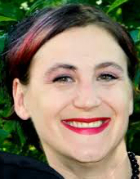 The bed nucleus of the stria terminalis (BNST) is part of the limbic-hypothalamic system important for behavioral responses to stress and alcohol, and glutamate transmission within BNST is implicated in the neurobiology of alcoholism. The present study provides evidence that a history of excessive alcohol drinking increases signaling through the metabotropic glutamate receptor 5 (mGlu5) receptor within the BNST in an adaptive response to limit alcohol consumption. In particular, disruption of mGlu5 phosphorylation by extracellular signal-regulated kinase (ERK) within this brain region induces excessive alcohol-drinking,that reflects a selective insensitivity to the aversive properties of alcohol intoxication. These data indicate that a specific signaling state of mGlu5 within BNST plays a central and unanticipated role in excessive alcohol consumption. The bed nucleus of the stria terminalis (BNST) is part of the limbic-hypothalamic system important for behavioral responses to stress and alcohol, and glutamate transmission within BNST is implicated in the neurobiology of alcoholism. The present study provides evidence that a history of excessive alcohol drinking increases signaling through the metabotropic glutamate receptor 5 (mGlu5) receptor within the BNST in an adaptive response to limit alcohol consumption. In particular, disruption of mGlu5 phosphorylation by extracellular signal-regulated kinase (ERK) within this brain region induces excessive alcohol-drinking,that reflects a selective insensitivity to the aversive properties of alcohol intoxication. These data indicate that a specific signaling state of mGlu5 within BNST plays a central and unanticipated role in excessive alcohol consumption.
No surprise that this work received some media attention! View the complete news release at https://www.news.ucsb.edu/2019/019354/tampering-brakes
Campbell, R. R. et al. Increased alcohol-drinking induced by manipulations of mGlu5 phosphorylation within the bed nucleus of the stria terminalis. J. Neurosci. 1909–18 (2019). doi:10.1523/jneurosci.1909-18.2018
Back to Top
Back to Trending Science Topics
Neuroimmunology of the female brain across the lifespan: Plasticity to psychopathology
Dr. Sarah Spencer, PhD
Principal Research Fellow
Head, Neuroendocrinology of the Obese Brain Research Group
School of Health and Biomedical Sciences, RMIT
Melbourne, VIC, Australia
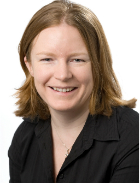 The female brain is highly dynamic and can be uniquely both resilient and vulnerable to many environmental challenges. Yet, it has historically been very poorly researched. In this review by an international team of five experts in the field of psychoneuroimmunology, we reveal current findings on how the female neuroimmune system develops and changes through the lifespan, in health and in disease. Here we deliberately highlight female-specific research and understanding, stressing the restrictions inherent in limiting female-related research to that of a comparison with males. Understanding the female brain presents one of the next great frontiers for science. Fortunately, it is one we are starting to make encouraging headway towards. The female brain is highly dynamic and can be uniquely both resilient and vulnerable to many environmental challenges. Yet, it has historically been very poorly researched. In this review by an international team of five experts in the field of psychoneuroimmunology, we reveal current findings on how the female neuroimmune system develops and changes through the lifespan, in health and in disease. Here we deliberately highlight female-specific research and understanding, stressing the restrictions inherent in limiting female-related research to that of a comparison with males. Understanding the female brain presents one of the next great frontiers for science. Fortunately, it is one we are starting to make encouraging headway towards.
Barrientos, R. M., Brunton, P. J., Lenz, K. M., Pyter, L. & Spencer, S. J. Neuroimmunology of the female brain across the lifespan: Plasticity to psychopathology. Brain. Behav. Immun. (2019). doi:10.1016/j.bbi.2019.03.010
Back to Top
Back to Trending Science Topics
Therapeutic impacts of environmental enrichment: Neurobiological mechanisms informing molecular targets for enviromimetics
Prof. AJ Hannan, PhD
Florey Institute of Neuroscience and Mental Health
Melbourne, VIC, Australia
This Editorial describes a new special issue on environmental enrichment (EE). A series of review and primary research articles in the special issue describe effects of EE on brain and behavior, in health and disease. The therapeutic effects of EE are reviewed for preclinical models of addiction, traumatic brain injury and various cognitive and affective disorders. Furthermore, novel research findings are described regarding the effects of EE, and related interventions including voluntary exercise, on context and cued fear conditioning, age-related cognitive decline, experimental autoimmune encephalomyelitis, optic neuritis, amyblyopic, as well as intergenerational effects on offspring behavior.
Kelly, Á. & Hannan, A. J. Therapeutic impacts of environmental enrichment: Neurobiological mechanisms informing molecular targets for enviromimetics. Neuropharmacology 145, 1–2 (2019).
Back to Top
Back to Trending Science Topics
Interview with 2019 Keynote Speaker: Professor Gavan McNally, PhD
Dr. Daniela Neuhofer, PhD, Guest Editor
Medical University of South Carolina
Charleston, SC, USA
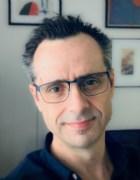 Dr. McNally, your lab at the School of Psychology, UNSW Sydney is interrogating neurocircuits involved in learning and motivation. What was the last finding out of your lab, that got you really excited? Dr. McNally, your lab at the School of Psychology, UNSW Sydney is interrogating neurocircuits involved in learning and motivation. What was the last finding out of your lab, that got you really excited?
M: I love data, so the last thing that got me really excited was the last data I looked at (today, it was some dopamine photometry data in ventral striatum).
At what stage of your career did you know which scientific questions you wanted to answer in your own lab?
M: I always wanted to work on problems in the behavioral neuroscience of learning and motivation. I enjoyed classes on these topics as an undergraduate, much more than other topics, so all of my work has been in this field. However, when I started my own lab I spent some time thinking about questions and topics that I thought were important but receiving less attention. This seemed, at the time at least, a way of giving myself some intellectual space and freedom. It was not until I started my lab that I started to seriously think about this.
Was this a natural transition from your work as a PhD student or postdoc?
M: It was natural in the sense that the core ideas remained the same, but I wanted to move on to new questions. Partly I wanted to do something new (for me), partly I wanted intellectual space, and partly I wanted to distinguish my work from that of my PhD and postdoctoral training. So, I deliberately moved beyond my previous work.
Do you have an advice for young neuroscientists on how to find their independence of thought?
M: Read widely, including the old literature. In the end, follow the questions you are passionate about.
I found on your Twitter profile that you are Professor, Scientist and Father but also Musician. Can you tell us more about it this hobby and how you keep a healthy work-life balance?
M: Finding balance is an ongoing quest for me, as it is, I suspect, for many scientists. Fortunately, I enjoy what I do, so it rarely feels like work. However, I am mindful that we all need to switch off. I enjoy composing as well as playing music and have done so for a long time; but I also enjoy reading, swimming, walking etc. I am better than I used to be at making time for these and making time for the rest of life, but it waxes and wanes.
You are going to give a Keynote lecture at the 2019 IBNS conference in Cairns/Australia. Do you remember the first/one of the first scientific conference that you have ever been?
M: Yes, very clearly. SFN 1997.
What did impress you the most?
The scale and collegiality of the meeting.
Do you have an advice for young scientist attending their first conference this year?
Meet new people, ask questions at posters and talks, and enjoy the journey.
Back to Top

Member News
Jacqueline N. Crawley, Distinguished Professor of Psychiatry and Behavioral Sciences and Robert E. Chason Endowed Chair in Translational Research at the University of California Davis MIND Institute in Sacramento, is the recipient of the UC Davis School of Medicine 2018 Dean's Award for Excellence in Research. During 2018 - 2019, Jacqueline served as Neuroscience Section Chair of the American Association for the Advancement of Science (AAAS). Dr. Crawley is an IBNS Past-President, and her laboratory conducts preclinical investigations of potential therapeutics for autism spectrum disorder, employing behavioral phenotypes in mouse models. Recent publications have focused on GABA agonists, including a 2019 paper in Autism Research, Rhine et al., Hypothesis-driven investigations of diverse pharmacological targets in two mouse models of autism. Congratulations on your achievements!

Back to Top
_____
Jared W. Young, PhD, Associate Professor at the Department of Psychiatry, UCSD and IBNS President-Elect, was recently awarded the Schizophrenia International Research Society 2019 Rising Star Award. Cheers to your success!
_____
Thomas D. Prevot, Post-doctoral Fellow at the Centre for Addiction and Mental Health in Toronto and a fellow of the Department of Psychiatry from the University of Toronto, has recently published a paper, filed a patent and got his project and findings covered in 40+ newspapers journals, including The Guardian, BBC News, but also a live interview on BBC World and a broadcasted interview (in French) with CBC-Radio Canada. Congrats, Thomas, what an achievement!
_____
Welcome to the new March 2019 IBNS members! And to the recently renewed members... thank you for your continued support! New and returning members of IBNS, March 2019:
Claudia Alvarez (Student Member), Randolph-Macon College, Ashland, VA, United States
Loani Anderson (Student Member), CCC Humanidades, Saltillo, Mexico
Zane Andrews, PhD (Affiliate Member), Monash University, Clayton, MEL, Australia
Irina Baetu, PhD (Regular Member), University of Adelaide, Adelaide, SA, Australia
Tallie Baram, PhD, MD (Regular Member), University of California-Irvine, Irvine, CA, United States
Carlos Bolanos, PhD (Regular Member), Texas A&M University, College Station, TX, United States
Vincent Campese, PhD (Regular Member), University of Evansville, Evansville, IN, United States
Rose Chesworth (Postdoc Member), Western Sydney University, Campbelltown, NSW, Australia
Laura Corbit, PhD (Regular Member), University of Toronto, Tortonto, ON, Canada
Lea Decarie-Spain (Student Member), University of Montreal, Montreal, QC, Canada
Susan Farr, PhD (Regular Member), St. Louis University, St. Louis, MO, United States
Andrea Gogos, PhD (Regular Member), Florey Institute of Neuroscience and Mental Health, Melbourne, VIC, Australia
Francisco Guimaraes, PhD (Regular Member), University of Sao School of Medicine, Ribeirao Preto, Brazil
Lauren Harms, PhD (Regular Member), The University of Newcastle, Callaghan, NSW, Australia
Philip Jean-Richard-dit-Bressel (Postdoc Member), UNSW Sydney, Kensington, NSW, Australia
Gyorgy Kemenes, PhD (Regular Member), University of Sussex, Brighton, United Kingdom
Ildiko Kemenes, PhD (Regular Member), University of Sussex, Brighton, United Kingdom
Simon Killcross, PhD (Regular Member), UNSW Sydney, Kensington, NSW, Australia
Tod Kippin, PhD (Regular Member), University of California Santa Barbara, Santa Barbara, CA, United States
James Kesby (Postdoc Member), University of Queensland, Brisbane, QLD, Australia
Amy Lee (Student Member), UNSW, Kensington, NSW, Australia
David Mor, PhD (Regular Member), University of Sydney, Sydney, NSW, Australia
Daniela Neuhofer (Postdoc Member), Medical University of South Carolina, Charleston, SC, United States
Erik Olsen, PhD (Regular Member), University of Colorado Denver, Denver, CO, United States
Zhi Yi Ong (Postdoc Member), UNSW, Kensington, NSW, Australia
Joel Raymond (Student Member), University of Sydney, Sydney, NSW, Australia
Adrian Russo (Student Member), La Trobe University, Bundoora, VIC, Australia
Luba Sominsky (Postdoctoral Member), RMIT, Melbourne, VIC, Australia
Stefanos Stagkourakis (Postdoc Member), California Institute of Technology, Pasadena, CA, United States
Jodi Thomas (Student Member), James Cook University, Douglas, QLD, Australia
Aftyn Trumbo (Student Member), Randolph-Macon College, Ashland, VA, United States
Kate Wassum, PhD (Regular Member), University of California Los Angeles, Los Angeles, CA, United States
Back to Top
2019 Early Career Achievement Award: Zackary Cope, PhD
Zackary Cope, PhD
University of California San Diego
San Diego, CA, USA
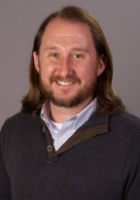 Growing up among the endless corn and soybean fields of central Indiana, my father used to subject our family to endless road trips. These were not destination vacations; these were trips with seemingly no destination or end in sight. As the smallest kid, I was usually stuffed in the back seat where I pondered deep questions. I don’t say this to brag, just that this was still well over a decade before we carried constant entertainment in our pockets. It was simply an exercise to keep my brain from completely numbing. Does the color blue look the same to me as it does everyone else? Why are some people happy and others sad? What makes people decide to be good or bad? Why in the world do people need so many soybeans? Growing up among the endless corn and soybean fields of central Indiana, my father used to subject our family to endless road trips. These were not destination vacations; these were trips with seemingly no destination or end in sight. As the smallest kid, I was usually stuffed in the back seat where I pondered deep questions. I don’t say this to brag, just that this was still well over a decade before we carried constant entertainment in our pockets. It was simply an exercise to keep my brain from completely numbing. Does the color blue look the same to me as it does everyone else? Why are some people happy and others sad? What makes people decide to be good or bad? Why in the world do people need so many soybeans?
Our food chain aside, it’s clear that I always had a need to understand what makes us tick. Much later in college I found out that this was something I could actually study. Ethology and neurobiology were my two favorite college courses and are the earliest recollections I have being truly fascinated and engaged by my college coursework. Later I volunteered in the lab of Dr. Russell Brown at East Tennessee State University where I first cut my teeth as a behavioral neuroscientist. At that time, I had no clue that behavioral neuroscience would take me so far. And I mean far literally since IBNS always travels to the best locations. In 2016 an IBNS travel award allowed me to attend the meeting in Budapest, Hungary. That was my first IBNS meeting and the close and collegial attitude immediately stood out to me compared to other meetings. This also where I met many of my best colleagues, which is a testament to the terrific membership of our society.
Now IBNS will take me to Cairns, Australia to accept an Early Career Investigator Award. I am sincerely honored to be recognized by the Awards and Nominations Committee, which is composed of many of people I met in Budapest. This is why I was happy to serve on the Education and Training Committee for the last two years, reading countless travel award applications of fantastic scientists and trainees, many of whom will be now be attending an IBNS meeting for the first time. I hope they feel as welcomed as I did in Budapest.
In the back seat of that station wagon, I never could have imagined that I would receive an honor like this. My family deserves a great deal of credit for fostering this curiosity, never becoming annoyed by the constant “whys” floating up from the back seat. Many mentors along the way, namely Russ Brown, Gary Aston-Jones, and our very own Jared Young made this possible, frequently steering me through challenging and turbulent waters. Finally I want to thank you, the members of IBNS. There aren’t words to express my excitement in receiving this award, so a simple thank you will have to suffice. I cant wait to see you all again in Australia!
Member Publications
In this column, we share member's papers that will be of interest to IBNS members...
Professor David Glanzman, PhD, University of California Los Angeles
For over a century, the predominant view in memory research has been that the engram, the physical substrate of memory, is stored at the synapse. However, research in the sea snail, Aplysia, by David Glanzman (UCLA) and his lab implicates the nucleus as a cellular location of memory storage in Aplysia.
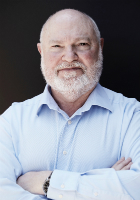
Aplysia only has 20,000 neurons, many of which are mapped and understood in terms of function, circuitry, and behavior. Glanzman and his colleagues exploited the simplicity of the Aplysia nervous system in order to understand the engram for a simple form of long-term memory called sensitization. Sensitization of a defensive behavior in the snail, the siphon withdrawal reflex (SWR), can be taught by repeated electrical tail shocks during training, a form of non-associative learning. The training results in long-term sensitization in Aplysia, meaning they more strongly execute the SWR when a subsequent touch is applied to the siphon during testing.
In their eNeuro publication, Bédécarrats et al. further their alternative hypothesis of memory storage in the nucleus with four main findings:
- RNA extracted from the central nervous system of sensitized (trained) donor Aplysia induced behavioral sensitization when injected into the central nervous system of untrained Aplysia recipients.
- The behavioral effect of the RNA-induced sensitization in the untrained recipients required DNA methylation.
- Sensory neuron hyperexcitability, a cellular mechanism of long-term sensitization, was replicated in vitro by exposing sensory neurons dissociated from untrained Aplysia to RNA isolated from trained Aplysia.
- The in vitro effect of RNA isolated from trained Aplysia was specific to sensory neurons, but not motor neurons, dissociated from untrained Aplysia.
These results challenge the dominant synaptic model of memory and potentially point the way to a new understanding of the engram.
See the published paper in eNeuro >>
See eNeuro commentary >>
(Modified from R.E. Carney, eNeuro, 2018).
_____
Kelly Á, Hannan AJ.
Therapeutic impacts of environmental enrichment: Neurobiological mechanisms informing molecular targets for enviromimetics.
This Editorial describes a new special issue on environmental enrichment (EE). A series of review and primary research articles in the special issue describe effects of EE on brain and behavior, in health and disease. The therapeutic effects of EE are reviewed for preclinical models of addiction, traumatic brain injury and various cognitive and affective disorders. Furthermore, novel research findings are described regarding the effects of EE, and related interventions including voluntary exercise, on context and cued fear conditioning, age-related cognitive decline, experimental autoimmune encephalomyelitis, optic neuritis, amyblyopic, as well as intergenerational effects on offspring behavior. See paper >>
Neuropharmacology. 2019;145(Pt A):1-2.
_____
Kong G, Cao KL, Judd LM, Li S, Renoir T, Hannan AJ.
Microbiome profiling reveals gut dysbiosis in a transgenic mouse model of Huntington's disease.
This study provides the first evidence of gut dysbiosis Huntington's disease (HD). HD is a progressive neurodegenerative disease which is fatal and currently incurable. Using a transgenic mouse model of HD, the authors performed gut microbiome profiling using 16 rRNA amplicon sequencing. The changes in bacterial composition of the microbiome of the HD mice occurs early in the disease process, raising the possibility that microbiota can modulate pathogenesis of the motor, cognitive and behavioral symptoms. These findings have implications for the development of novel therapeutic approaches for this devastating disease. See paper >>
Neurobiol Dis. 2018 Sep 5. doi:10.1016/j.nbd.2018.09.001. [Epub ahead of print]
Back to Top
28th Annual IBNS Conference
Save the date for this must-attend event! June 23 - 27, 2018, the 28th Annual IBNS Meeting is in Cairns, Australia.
Traveling to Australia:
Each participant is responsible for determining the visa/passport requirements for their own travel. Please be aware that Australia requires either a Visa or ETA (Electronic Travel Authority) from all countries.
An Electronic Travel Authority (ETA) provides authorization to travel to and enter Australia and is electronically linked to your passport. It is for short term stays for tourism or business visitor activities such as attending a conference. See https://www.eta.homeaffairs.gov.au/ETAS3/etas for details. The current cost is $20 AUD (approximately $14 USD) and can be easily applied for online.
IBNS has partnered with American Airlines for 5% discount on published fares for travel from the USA to Australia!* Contact the American Airlines Meeting Services Desk at 1-800-433-1790 for assistance with reservations and ticket purchase OR book online at www.aa.com for AA/AE flights only. For the IBNS discount, use the Authorization Code 6169GC.

*Valid for June 14-30 travel dates

(preliminary schedule)


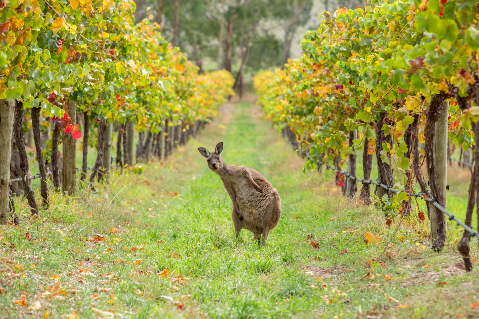
Be sure to keep checking the IBNS 2019 meeting page for frequent updates.
Don't forget to stay connected with us through #IBNS, #IBNSconnect and #IBNS2019!
Back to Top
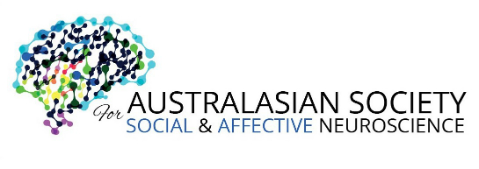
Are you coming to IBNS in Cairns, Australia? Add a few extra days to visit the exciting and official IBNS Satellite AS4SAN Conference (Australian Society for Social & Affective Neuroscience). The meeting at the University of Newcastle will run from June 17 - 19, 2019, with workshops and presentations on research relevant to social and affective neuroscience.
AS4SAN is a not-for-profit society that brings together clinicians and researchers to discuss how our brains process social and affective information. Social neuroscience is an exciting new research field and attracts researchers interested in everything from genetics, behaviour, psychophysiology, brain structure and function through to clinical disorders (such as dementia, autism and schizophrenia) and their treatment.
This year's keynote speakers will feature our very own IBNS President, F. Scott Hall (University of Toldedo) and Australian experts Drs. Belinda Craig (UNE) and Izelle Labuschagne (ACU).
A discounted rate will apply to IBNS attendees, so please join us!
Back to Top
Pre- and Post-IBNS Conference Tours
What's on your bucket list? Here's an opportunity for great experiences and perhaps scratch off  some of those bucket list items! some of those bucket list items!
There's something for everyone!
What: Local Tours discounted for IBNS delegates
What: Five (5) Day Pre-Conference Tour
Where: Sydney, Brisbane / Gold Coast
What: Post-Conference Tour
Where: Auckland and surrounds
SEE MORE INFORMATION >>
|